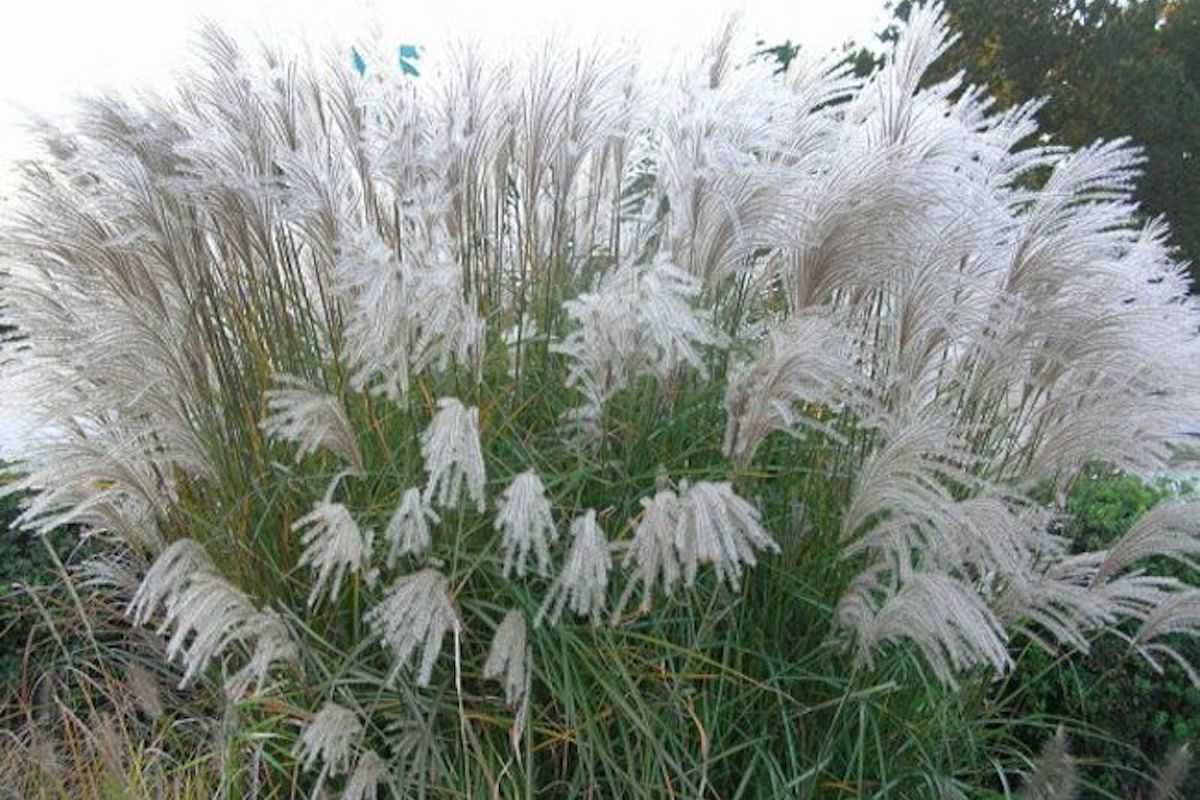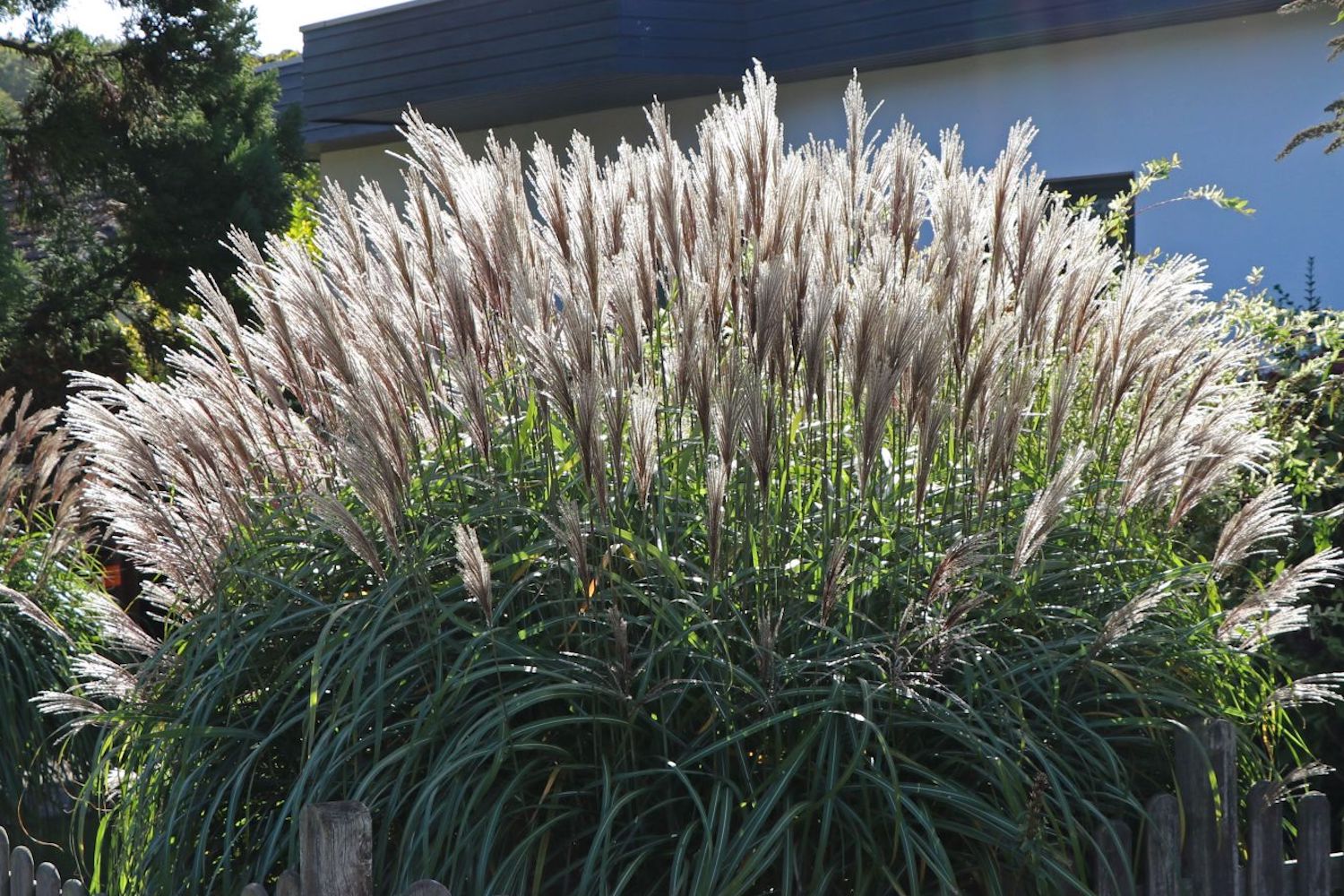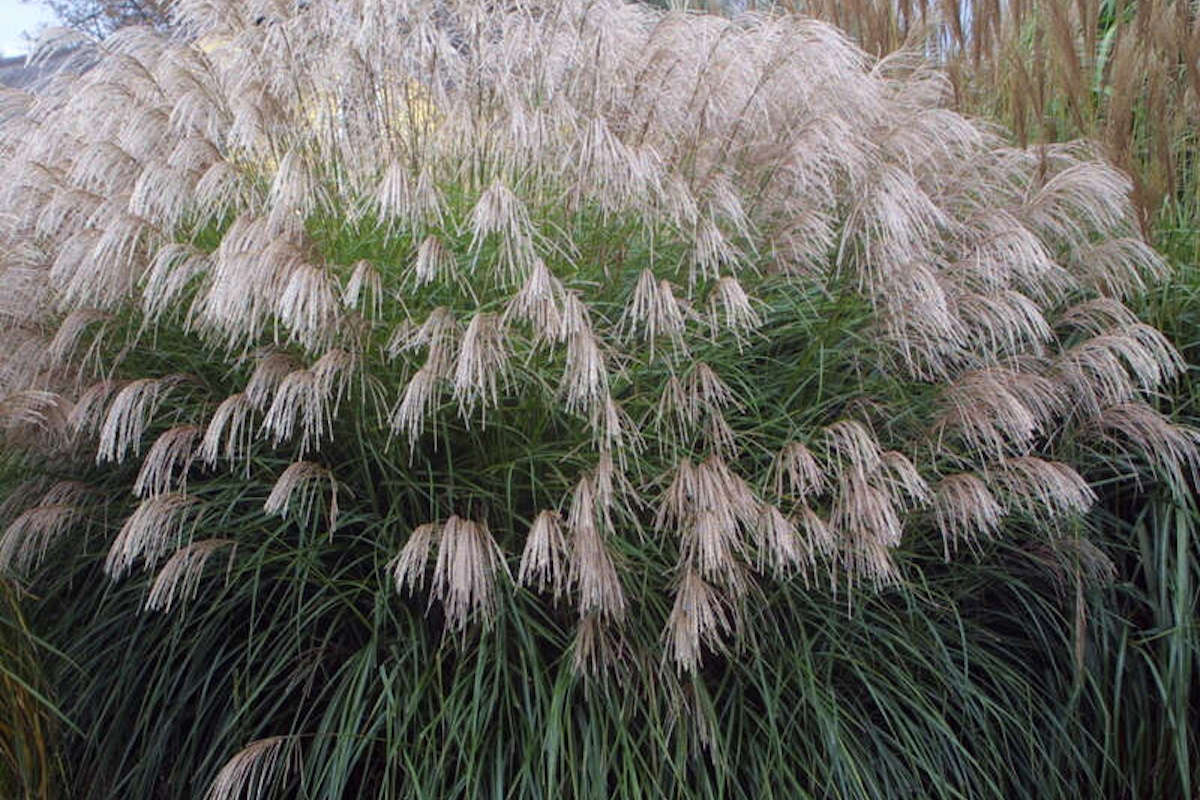Miscanthus sinensis 'Grosse Fontäne'
Approx. 0.5 litre pot
About this cultivar:
Miscanthus sinensis 'Grosse Fontäne' is another cultivar that won the Royal Horticultural Society Award of Garden Merit (RHS AGM) in 2001. The trials notes say 'Very long arching, green leaves. Distinct red flower heads held hight above the foliage, turning more straw coloured with age. Thin airy habit. Distinct.'
Translates as 'Large Fountains', it was raised by Ernst Pagels. Almost like a big pampas grass, but with lighter, more numerous, flower heads that give it a different movement.
Ernst Johann Friedrich Pagels (1913- 2007) was a German gardener and plant breeder. After Karl Foerster, his role model, and Georg Arends, Pagels became the most important German breeder of the 20th century. In total, he introduced more than 130 varieties in the course of almost 50 years of breeding work. His speciality was Miscanthus and other genus that have went on to become popular in the New Perennial movement, especially in Great Britain and the United States.
- Position: Full sun, partial shade
- Soil: Almost any soil, grows well in Ballyrobert
- Flowers: September, October, November
- Other features: Royal Horticultural Society Award of Garden Merit (RHS AGM)
- Hardiness: H6 - Hardy in all of UK and northern Europe (-20 to -15°C), Fully hardy, grows well in Ballyrobert
- Habit: Clump forming, Tufted
- Foliage: Semi evergreen
- Height: 210 - 250 cm (7 - 8.5 ft)
- Spread: 120 - 180 cm (4 - 6 ft)
- Time to full growth: 2 to 5 years
- Plant type: Herbaceous Perennial, Grass like
- Colour: Green, yellow, white, red
- Goes well with: Helianthus, Echinacea, Coreopsis or Sedum
About this genus:
Miscanthus gets it name from the Greek for stem, miskos, and flower, anthos. It is commonly known as Maiden Grass. It is renowned for its versatility as a tall, perennial, ornamental grass. New introductions from Germany and Japan have improved stature, foliage colour, and flower heads.
Many of the popular hybrid Miscanthus are variegated (e.g., Miscanthus 'Morning Light') and many Maiden grasses also have attractive seed heads. Variegated ornamental grasses offer a colour contrast in the garden as well as a pleasing habit.
A few selections of Miscanthus sinensis are controversial because they re-seed excessively, primarily in disturbed sites. We continually discard any Miscanthus that displays this tendency.
Try pairing Miscanthus with flowering plants such as Helianthus, Echinacea, Coreopsis or Sedum. Mainden Grass also looks great in large drifts where the leaves and flower heads can be seen swaying in the wind. It is a tough, low maintenance plant which makes it perfect for wet or dry gardens in any situation apart from full shade. Miscanthus is versatile from a design standpoint; it can be used as a specimen, for massing or screening, in large containers, or at the pond's edge. I say plant this grass where its wonderful winter interest can be enjoyed!








